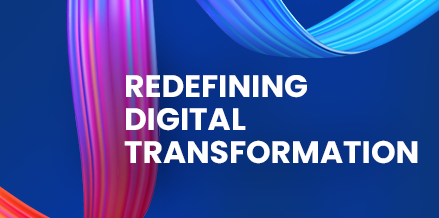The health of the world’s oceans is no longer an environmental concern alone. It has emerged as a business issue of definition of the whole maritime industry. Oceans need to be resilient, predictable and sustainably managed by fisheries, shipping operators, marine logistics companies, offshore energy producers, coastal infrastructure planners, insurers and regulators.
But the oceans are undergoing unprecedented pressure due to climate change, over-exploitation, pollution, biodiversity loss and more industrialization. To overcome this complexity, geospatial intelligence and next-generation maritime software are becoming more important to maritime leaders in order to comprehend the current state of the environment in real-time. One of the strongest tools in the modern world is ESRI GIS software which offers powerful mapping, spatial analysis and real time monitoring services. When incorporated into the latest maritime software, ESRI establishes a whole new dimension of presence of ocean conditions, vessel behavior, marine biodiversity and environmental risks.
The question to ask in the case of Maritime digital transformation is simple: How can ESRI support companies in maritime industry keep track of ocean health and do so in accuracy, foresight and operational relevance?
Why Ocean Monitoring Is Now a Core Business Priority
Historically, ocean health monitoring was viewed as an academic or regulatory domain. Today, it is a strategic and operational essential for any organization using maritime software solutions to run its operations. The shift is happening because:
1. Environmental volatility creates operational risk
Changes in sea temperature, salinity, storm patterns, and ocean circulation influence shipping routes, fisheries performance, offshore assets, and port resilience.
2. Stakeholders demand transparent sustainability
Investors, regulators, and customers expect accurate environmental reporting powered by technologies such as ESRI GIS software and integrated Maritime digital solutions.
3. Regulations, conservation zones, and emissions standards are tightening
Companies need spatial intelligence to comply with marine protected areas, emissions caps, ballast water regulations, and environmental impact requirements.
4. Data is becoming the maritime sector’s competitive advantage
Companies using a skilled maritime software development company to implement geospatial platforms are gaining deeper insights and smarter operational capabilities. Against this backdrop, ESRI has emerged as the geospatial backbone of ocean intelligence.
ESRI as the Core of Maritime Ocean Intelligence
At its core, ESRI GIS software unifies mapping, analytics, visualization, and predictive modeling. For maritime enterprises, ESRI integrates seamlessly with leading maritime software systems to provide a holistic view of the marine environment. This includes:
- Satellite imagery
- Hydrographic charts
- Marine weather and climate data
- Ocean sensor feeds
- AIS-based vessel tracking
- Biodiversity and ecological datasets
- Underwater topography
- Real-time IoT data
When these layers are combined through purpose-built Maritime digital solutions, companies gain a living, dynamic view of ocean health and maritime activity.
1. Real-Time Environmental Monitoring Using ESRI
Maritime firms need precise, real-time insights into conditions such as:
- Sea surface temperature
- Salinity levels
- Dissolved oxygen
- Chlorophyll concentration
- Turbidity and water clarity
- Harmful algal blooms
- Wave height and current strength
ESRI ARC GIS software allows maritime companies to stream live data from satellites, sensors, and digital ocean systems directly into operational dashboards. When paired with enterprise-grade maritime software solutions, leaders can track environmental anomalies that impact:
- Shipping safety
- Fisheries productivity
- Offshore energy assets
- Marine ecosystems
- Port operations
These real-time dashboards are increasingly being deployed by forward-thinking companies supported by a specialized maritime software development company.
Read More: Agentic AI vs Generative AI: What’s the Difference and Why It Matters
2. Detecting and Managing Ocean Pollution
Oil spills, chemical discharge, plastic waste and industrial run off are ecological and economic liabilities. ESRI helps companies to discover, interpret, and take action against pollution.
Key capabilities include:
- Pollution Detection: A satellite imagery-based automated classification method is used to recognize plumes of sediments, clusters of plastic material, or oil slick
- Pollution Movement Modeling: In Maritime digital solutions currents, wind patterns and tidal movement are combined to predict the possible path of wind or dispersal of pollutants
- Identification of the source: Combination of AIS data, shipping routes, coastal actions, and the location of industries aids in the identification of the culprits
Response Coordination ArcGIS Mission is a situational awareness that will support real-time coordinated cleanup and mitigation. By integrating the maritime software into the workflow, the response teams receive a single operational view that increases the speed and accuracy.
3. Sustaining Fisheries Through Biodiversity Mapping
Sustainable fisheries rely heavily on understanding species behavior, habitat health, and environmental shifts. This is where ESRI becomes an essential partner.
ESRI supports:
- Habitat mapping for sensitive ecosystems
- Species distribution analysis
- Environmental trend forecasting using GeoAI
- Harvest planning with ecological precision
Many fisheries now rely on maritime software solutions that incorporate ESRI data layers to optimize catch efficiency while ensuring ecological safety.
4. Designing Sustainable Shipping Routes
Environmental intelligence is now a critical component of route optimization in the digital maritime sector. By integrating ESRI GIS software with navigation-focused Maritime digital solutions, companies can incorporate:
- Weather conditions
- Ocean current patterns
- Marine hazard zones
- Seasonal ecological migration routes
- Marine protected areas
- Emission reduction requirements
This results in shipping routes that are safer, greener, and more cost-effective. The most advanced operators collaborate with a maritime software development company to incorporate ESRI-powered routing intelligence directly into fleet management systems.
5. Monitoring Climate Change Impact
Climate change introduces a wide range of challenges for maritime companies, including:
- Sea level rise
- Coastal flooding
- Increased storm frequency
- Changes in fish stock distribution
- Ocean acidification
Using ESRI analytics combined with enterprise maritime software, companies can model future conditions and assess long-term risk across:
- Port and coastal infrastructure
- Offshore wind farms
- Subsea pipelines and cables
- Fisheries territories
- Shipping corridors
This empowers organizations to build climate-resilient strategies that align with their sustainability and investment priorities.
6. Strengthening ESG Compliance and Reporting
Environmental regulations in the maritime sector increasingly rely on spatial data. ESRI enables companies to generate accurate reports for:
- Emissions
- Ballast water compliance
- Protected habitat impact
- Marine spatial planning alignment
- Pollution monitoring
- Biodiversity protection
Through StoryMaps and other visualization tools, organizations can communicate environmental progress clearly and credibly. When integrated into maritime software solutions, ESG reporting becomes automated, transparent, and audit-ready.
7. Supporting Marine Spatial Planning (MSP)
Marine Spatial Planning requires balancing conservation, commerce, and coastal development. ESRI, together with specialized Maritime digital solutions, helps businesses:
- Visualize competing ocean uses
- Evaluate environmental sensitivity
- Reduce conflicts between sectors
- Align operations with government planning frameworks
This reduces regulatory friction and improves long-term strategic planning.
8. Creating Digital Twins for the Ocean
Digital twins are transforming maritime operations by creating immersive, real-time replicas of:
- Ports
- Coastal ecosystems
- Offshore platforms
- Fisheries regions
- Maritime corridors
A skilled maritime software development company can integrate ESRI data into digital twin platforms that monitor environmental conditions, asset health, and ecological change with precision.
These digital twins allow simulation-driven decision making and future scenario modeling for environmental and operational strategy.
Read More: Why Cloud Cost Optimization Fails Without Visibility into Workload Behavior
Strategic Benefits for Maritime Enterprises
ESRI, combined with modern maritime software solutions, delivers several strategic advantages:
ESRI used with modern maritime software solution provides a number of strategic benefits:
- Environmental intelligence to reduce risk: Firms will have real time understanding of the ocean, dangers, and environmental transformation.
- Operation optimization: Streamlined operations through improved routing, asset planning and resource management will result in cost savings.
- Better sustainability performance: ESG commitment and regulatory compliance is backed by spatial evidence.
- Competitive differentiation: Businesses that have developed Maritime digital solutions are more resilient and environmentally friendly than other businesses.
- Rapid digital transformation: Interfaces with IoT, AI, and cloud architecture form a complete maritime technology environment.
Conclusion: The Future of Maritime Sustainability Is Geospatial
The ocean condition cannot be separated from the future of maritime business. Companies can have a robust structure on which to track, perceive, and react to environmental change by incorporating ESRI GIS software into next-generation maritime software.
The next generation of Maritime digital solutions will be organizations that invest in smart geospatial systems with the assistance of an efficient maritime software development company. By doing so, these companies will be in a better position to minimize risk, enhance sustainability, unlock operational efficiency and manoeuvre through an increasingly uncertain marine environment.
The ocean’s future depends on informed action. With ESRI, maritime enterprises finally have the technology to turn environmental intelligence into operational and strategic leadership.
Ready to lead with ocean intelligence? Connect with us to build smarter, cleaner, and more sustainable maritime solutions.












